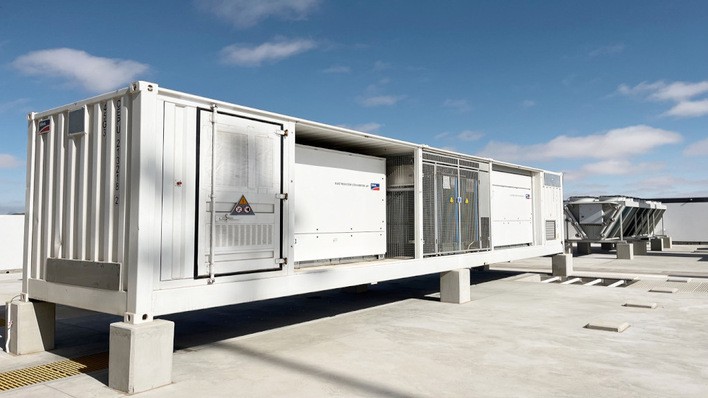Types of Battery Energy Storage Systems: A Comprehensive Guide for Procurement Decision Makers
- Introduction: Why Choosing the Right Battery Energy Storage System Matters for Procurement
As the global energy landscape rapidly evolves, battery energy storage systems (BESS) have become critical to ensuring grid reliability, integrating renewables, and providing backup power solutions. For procurement decision makers, selecting the right BESS is not just about initial cost—it directly impacts long-term operational expenses, system performance, and risk management.
Procurement is a multifaceted challenge involving technical specifications, economic returns, safety standards, supply chain reliability, and after-sales service. An inappropriate choice can lead to premature degradation, costly maintenance, safety issues, and regulatory non-compliance, all undermining the project’s overall profitability and success.
Therefore, procurement professionals must thoroughly understand the various types of battery storage technologies, their unique advantages and limitations, and carefully align these with project requirements to make informed, value-driven decisions.
- Overview of Main Types of Battery Energy Storage Systems
2.1 Lithium-ion Batteries (LFP, NMC)
- Advantages: High energy density, long cycle life (2000–5000+ cycles), fast response time, low maintenance
- Limitations: Higher upfront costs, thermal sensitivity (especially NMC chemistry)
- Typical Applications: Residential storage, commercial & industrial (C&I) systems, grid ancillary services
2.2 Lead-Acid Batteries
- Advantages: Proven technology, low initial cost
- Limitations: Shorter lifespan (500–1500 cycles), heavy, maintenance-intensive
- Typical Applications: UPS systems, low-budget backup power
2.3 Sodium-Sulfur (NaS) Batteries
- Advantages: Suited for high-temperature operation, long-duration storage
- Limitations: Requires complex thermal management and safety measures
- Typical Applications: Utility-scale energy management and load leveling
2.4 Flow Batteries (Vanadium Redox, Zinc-Bromine)
- Advantages: Extremely long cycle life (10,000+ cycles), scalable capacity, safe chemistry
- Limitations: Large physical footprint, higher upfront costs
- Typical Applications: Large-scale renewable energy integration, long-duration storage
2.5 Nickel-Based Batteries (NiCd, NiMH)
- Usage: Specialized applications requiring robustness under extreme environments; limited general deployment
- Key Procurement Considerations and Their Impact
3.1 Lifecycle Cost (LCOE)
Evaluating not only capital expenditure but also operational costs including maintenance, replacement, and disposal is essential for determining true value.
3.2 Performance Metrics
Energy density, power density, round-trip efficiency, and depth of discharge directly affect system size, footprint, and energy yield.
3.3 Safety and Compliance
Adherence to standards such as UL9540, IEC certifications, and robust safety features mitigate risk and ease regulatory approval.
3.4 Supply Chain and Vendor Reliability
Stable supply chains and reputable vendors with strong service support reduce procurement risk and ensure project timelines.
3.5 Application Fit
Matching technology to use case—residential, commercial, utility-scale, or off-grid—ensures optimal system design and ROI.
3.6 Operation & Maintenance (O&M) Requirements
Systems with lower O&M burden can reduce lifecycle costs and simplify staffing needs.
3.7 Environmental Impact
Considerations include operating temperature range, recyclability, and environmental regulations compliance.
- Detailed Procurement Analysis by Battery Type
4.1 Lithium-ion Batteries
- Investment Returns: High upfront costs offset by longer lifespan and higher efficiency
- Common Pitfalls: Overlooking thermal management needs or charger compatibility
- Case Insight: Commercial projects using LFP chemistry demonstrate superior ROI and reliability over 10 years
4.2 Lead-Acid Batteries
- Cost Advantages: Attractive for low-budget or short-term installations
- Limitations: Frequent maintenance and shorter lifespan may increase total cost of ownership
- Application: Suitable for small-scale UPS or backup where replacement cycles are planned
4.3 Sodium-Sulfur Batteries
- Strengths: Effective for large-scale, long-duration applications
- Procurement Risks: High complexity requires expert evaluation and robust supplier partnerships
4.4 Flow Batteries
- Long-Term Asset: Excellent for grid-scale projects prioritizing durability and scalability
- Financial Consideration: Capital-intensive, requiring thorough financial planning and risk assessment
- Risk Management in Procurement
- Supplier Qualification: Conduct due diligence on vendor history, financial health, and support capability
- Price and Policy Volatility: Anticipate market fluctuations and policy changes impacting costs and timelines
- Contractual Safeguards: Include warranties, performance guarantees, and service level agreements (SLAs)
- Quality Assurance: Require factory audits, third-party testing, and on-site inspections
- Economic Benefits and Case Studies
- Lifecycle cost comparisons illustrate that higher initial investment in lithium or flow batteries often yields superior net savings over time due to reduced maintenance and replacement needs.
- Utility-scale installations show how sodium-sulfur and flow batteries provide cost-effective long-duration storage solutions that improve grid flexibility.
- Future Trends Impacting Procurement
- Emerging technologies like solid-state and sodium-ion batteries promise improved safety and cost profiles.
- Increasing adoption of smart BMS, AI-driven predictive maintenance, and modular designs reduce operational risks and enable scalable procurement strategies.
- Evolving standards and regulations demand continuous vendor engagement and compliance tracking.
- Conclusion
For procurement decision makers, a holistic understanding of battery energy storage system types, combined with detailed cost-benefit and risk analyses, is key to successful project delivery. Selecting the optimal BESS solution aligns technical, financial, and operational objectives to maximize project value.
Related Reading
To deepen your understanding of battery energy storage system design and practical considerations, consider these resources:
- The Latest Trends and Practical Guide to Battery Energy Storage System Design
- How to Choose Lithium Batteries for Energy Storage Systems with Backup Power Needs
These articles provide further insights into system design innovations and battery selection strategies tailored for backup and critical power applications.


